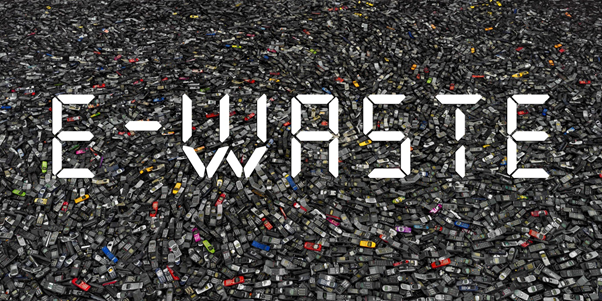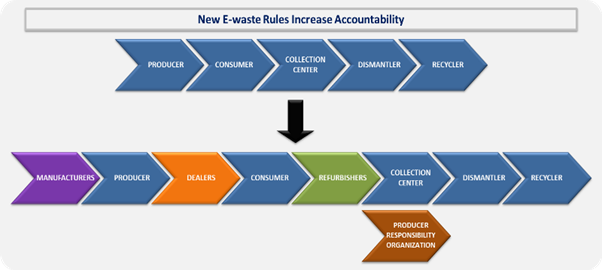New e-waste rules threaten jobs, collection network
Context
A proposed framework by the Centre for regulating e-waste in India has upset a key link of India’s electronic waste collection system and threatens the livelihood of thousands.
What is Electronic Waste (E-Waste)?
- Electronic-Waste is the term used to describe old, end-of-life or discarded electronic appliances.
- E-waste is categorised into 21 types under two broad categories:
- Information technology and communication equipment.
- Consumer electrical and electronics.
- Electronic waste (E-waste) is the fastest-growing stream of waste.
- The CPCB said that in 2019-20, 1 million tons of e-waste was generated, 22% of which was “collected, dismantled, recycled”.
- The Global e-Waste Monitor reports that nearly 3 million tons of electronic waste was generated in India, which is thrice the Centre’s estimates.

About E-waste Management Rules, 2016
- The Central Government, in the exercise of the powers provided under the Environment (Protection) Act, 1986, had notified e-waste management rules in 2016.
- These rules supersede the E-waste (Management and Handling) Rules, 2011.
- The rules aim to enable the recovery and/or reuse of useful material from e-waste, and to ensure the environmentally sound management of all types of waste of electrical and electronic equipment.
- For the first time, the rules brought the producers under Extended Producer Responsibility (EPR), along with targets.
- Producers have been made responsible for the collection of E-waste and for its exchange.
- The manufacturers, dealers, e-retailers, and refurbishers have been brought under the ambit of these rules to ensure that the e-waste is effectively channelized and disposed of.
- The urban local bodies have been assigned the responsibility of collecting back the e-waste arising from the orphan products and channelizing it to authorized dismantler or recycler.
- The EWM Rules 2016, have prescribed strict criteria for achieving effective collection, transportation, storage, channelization, and disposal of the e-waste in an environmentally sound manner.

Amendment to EWM Rules, 2016
- In 2018, the EWM Rules were further amended.
- The new E-Waste (Management) Amendment Rules, 2018 has the provision of introduction of Producer Responsibility Organisation (PRO) registration.
- PRO is defined as a professional organization which can take the responsibility for collection and channelization of e-waste to ensure environmentally sound management of such e-waste.
- PROs are now required to register with CPCB under the new Rules.
- PROs will also have to prove that all collections are legitimate and share proofs for such collections.
- Earlier, PROs were not able to procure waste from private and government institutions.
- The Rules address this lack of acknowledgement of legitimate PROs by asking them to register with CPCB.
Reasons behind High E-Waste Generation and Less Recycling
- Higher consumption rate of electronics:
- India is among the world’s largest consumers of mobile phones.
- Some 54-113 million mobile phones, weighing 10-20 tonnes, are lying in drawers and other storage spaces.
- Shorter product life cycles:
- It was found that the previous electronic gadgets were obsolete as the new upgrades and new models were launched in the market.
- Limited repair options:
- Many manufacturers don’t allow repair and reuse facilities.
- The Environmental Protection Agency of the USA estimates that more than 151 million phones a year- approximately 416,000 a day- are trashed and end up incinerated or landfilled.
- Hesitancy and Unawareness among Consumers:
- Most consumers are still unaware of how to dispose of their e-waste.
- Most Indians end up selling their e-waste to the informal sector.

